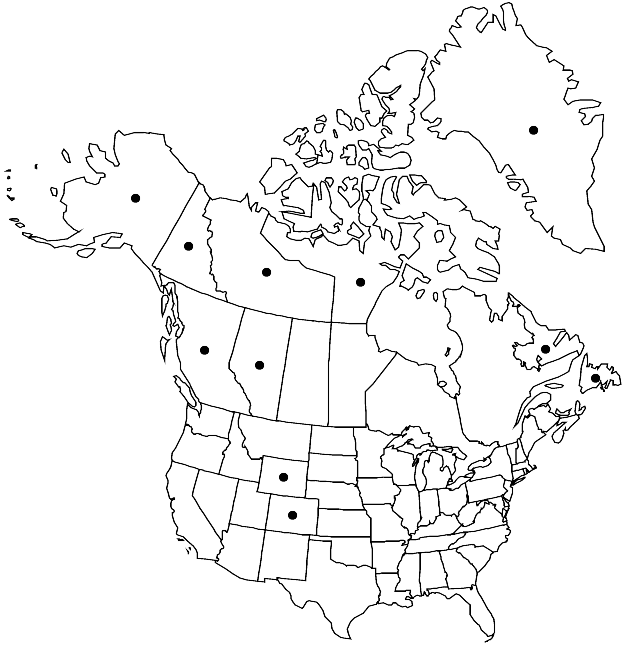Ptychostomum knowltonii
Phytologia 87: 21. 2005.
Plants in dense turfs, green or yellow-green. Stems 0.5–2(–3) cm, evenly foliate to comose, innovations elongate and evenly foliate; weakly radiculose. Leaves green, somewhat imbricate to weakly contorted or shrunken when dry, ovate, strongly concave, 1–2(–3) mm, somewhat enlarged toward stem apex; base not decurrent; margins revolute to mid leaf, limbidium strong, in (2–)3–4(–5) rows; apex acute to obtuse; costa percurrent to short-excurrent, awn recurved, denticulate; proximal laminal cells 3–4:1, same width as more distal cells; medial and distal cells hexagonal, 14–18 µm wide, (2–)3–4:1, walls thin. Specialized asexual reproduction absent. Sexual condition synoicous. Seta (2–)3–4 cm. Capsule yellow-brown, obovate to short-pyriform, symmetric, 2–3 mm, mouth red; operculum short-convex, apiculate; peristome reduced; exostome teeth yellow to orange proximally, hyaline distally, lamellae straight mid tooth, pores absent along mid line; endostome not adherent to exostome, basal membrane high, less than 1/2 exostome height, segments with ovate perforations, cilia absent or rudimentary. Spores (18–)20–30 µm, finely papillose, pale yellow or green.
Phenology: Capsules mature Jul–Aug.
Habitat: Wet soil in arctic-alpine
Elevation: low to high elevations (0-4000 m)
Distribution

Greenland, Alta., B.C., Nfld. and Labr., N.W.T., Nunavut, Yukon, Alaska, Colo., Wyo., Eurasia.
Discussion
Ptychostomum knowltonii is a distinctive species of small, evenly foliate plants with concave, ovate, keeled leaves, and a short capsule on a long, slender seta. The costae are red and prominent abaxially. In some collections, the capsules are of distinctly different ages in the same tufts.
Selected References
None.